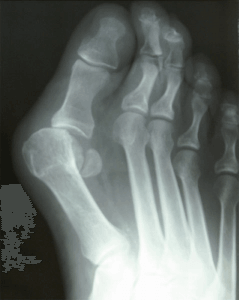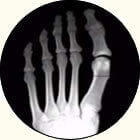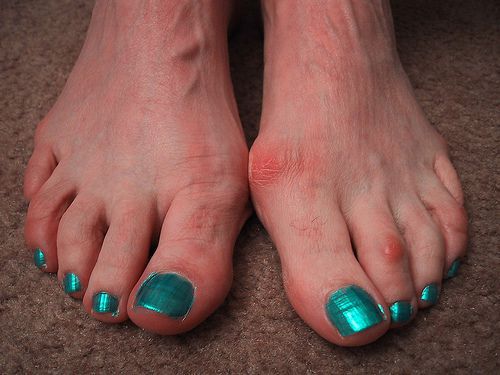bunion surgery
Displaying items by tag: bunion surgery
Dr. Brandon Nelson, A Board Certified Physician & Surgeon, Discusses How To Get The Best Possible Bunion Surgery

Bunion surgery is one of the most common procedures performed in the United States. It is almost exclusively done in an outpatient setting and the majority of procedures can be completed in less than 2 hours. Most patients will experience pain that lasts a few days and can begin weight bearing fairly soon. There are many different types of bunion surgery and not all are equally effective.
There are a few things that will help patients get a better outcome with bunion surgery. I will discuss these tips that can be helpful along with selection of the surgeon.
#1. The most important thing after having any type of surgery is to follow postoperative protocol. There are many tips that can improve your outcome after bunion surgery and careful adherence to postoperative protocols is essential.
#2. Bone healing supplementation, there are many different types of bone healing supplementation that are not all created equal however some of them can be highly effective in decreasing healing times. I have a brand that I recommend for all my patients that often shaves weeks off of healing time.
#3. Couch potato for your first week, set yourself up for success. During that first week just really take it easy, take your medications as prescribed, ice and elevate your foot.
#4. Surgeon selection, the majority of us have very similar training and most foot and ankle physicians are highly trained in this procedure. One question I would ask any surgeon is how many bunion surgeries they perform annually.
I hope this is helpful and can be utilized by you in the future.
Sincerely,
Dr Brandon Nelson, A Board Certified Physician & Surgeon Discuses Bunion Surgery and What to Expect During Recovery

Bunion surgery continues to be one of the most common surgical procedures performed in the United States. In the United States approximately 150,000 are operated on annually. The satisfaction and success rate are high, and most patients are happy with their outcomes.
It is important be well prepared for bunion surgery and I will discuss a few tips that will make the process easier.
1. Make sure you are prepared before the day of surgery and have somebody to help for the first 24 hours
2. Set up a central command, ie a bed downstairs that you have all your necessary items near. Your medications, a bathroom, and some entertainment.
3. Bathroom - you may want to investigate a booster seat for your toilet. It can be difficult if it is too low to stand up once seated.
4. Shower, consider a shower chair or stool
5. Cast cover of something to keep your leg dry
6. Vitamin supplements, I like collagen and bone healing supplements
7. Understand your post-operative course
8. Icing - do not underestimate the importance of icing and elevation for the first 72 hours.
9. Exercise to prevent blood clot, ankle rotations, leg lifts.
I hope you find some of these tips helpful. If you are experiencing foot or ankle pain, give us a call today at 425-391-8666 or make an appointment online.
Sincerely,
Dr. Brandon Nelson, A Board Certified Physician & Surgeon, Discusses Bunion Surgery and the Lapiplasty

Bunion surgery is the most common type of surgery I perform. I really enjoy correcting bunions and the outcome can be very satisfying for both the patient and physician. There are many types of bunion procedures that can be executed. Procedure selection is based on the size of the bunion, the patient and overall foot structure. It is important to have an overall foot exam and an x-ray.
Dr Brandon Nelson, A Board Certified Physician & Surgeon, Discuss Bunion Surgery

Bunion surgery is probably the most common procedure I execute. Most bunions can be fixed in about 2 hours and provide great long-term results. The most important factor is to have a thorough workup and x-rays to evaluate the foot. Once the foot and x-rays have been done then a plan for surgical or conservative care can be formulated.
If surgical intervention is called for, our office has an onsite surgery center which can save the average patient thousands of dollars as compared to free standing ASC’s or the Hospital. Our certified surgery center provides the best possible patient experience and has been functioning for over 15 years. If you have a bunion and have been contemplating what to do, I can help. I really enjoy helping people with bunions. Please make an appointment and we can discuss your options. Give us a call at 425-391-8666 or make an appointment online today.
Sincerely,
Dr. Brandon Nelson, A Board-Certified Foot & Anke Surgeon and Physician, Discusses Bunion Surgery
.jpg)
We know that bunions are an inherited trait that can be exacerbated by activities and shoe gear. Patients can have a bunion on the inside or outside of their foot. The typical bunion is on the inside of the foot and involves the 1st metatarsal while the bunion on the outside of the foot involves the 5th metatarsal. Either pathology can often require surgical intervention in order to provide long term relief and the primary surgery is usually the bunion on the 1st metatarsal. The bunion will usually dictate the recovery and the bunion on the 5th metatarsal usually heals faster.
Bunions are typically fixed in a few ways, either a surgery at the head of the metatarsal or the base of the metatarsal. It is important to get an x-ray to examine the overall foot structure to make sure there are no other driving forces that need to be fixed. The typical foot structure we see with a bunion on both sides is a flat foot that has progressed with time. The foot often widens when a flatfoot is present to try and create more stability. The flatfoot may or may not need to be addressed.
Most bunion surgery patients will be walking the entire time after surgery and can continue with modified exercise. I utilize techniques that allow my patients to be more active and recover faster. It takes years and hundreds of patients to perfect these techniques and dealing with athletes has allowed an advantage to improve on outcomes. If you are having bunion pain please make an appointment and I will see how we can best help you. Give us a call at 425-391-8666 or make an appointment online today.
Sincerely,
Board Certified Surgeon & Physician
Dr Brandon Nelson, A Board-Certified Physician & Surgeon, Discusses The Newest Bunion Surgery Technique

Bunions can be quite painful for many people. They can begin to interfere with activities and make exercising difficult. Additionally, it can become difficult to find shoe gear that fits properly. Most bunions are a genetic condition that is inherited and develops with time and loading of the foot. Many bunions get bigger as time goes on and eventually require surgical repair. Surgery for a bunion can be broken down into two categories what are called head procedures and base procedures. Today I will only discuss a base procedure as this seems to be the most common question lately.
Base procedures are often used for large bunions and can be a powerful tool to correct the foot. The base procedure is usually further divided into joint sparing procedures and joint destructive procedures. The most asked about procedure currently is the Lapiplasty. The Lapiplasty is a procedure based off a technique described by Paul Lapidus. It involves removing a joint in the foot that is the apex of the bunion deformity. The reason this procedure is so effective is it eliminates the primary cause of the bunion, the hypermobile joint that initiated the development of the bunion.
Lapiplasty is a tool set that is provided to make the Lapidus bunion surgery easier. This is a technique that has been utilized for years however this instrument set is the first of its kind and has helped make this procedure more reproducible. This is the most common bunion procedure I execute as it has great correction and great long-term outcomes. If you have a bunion and would like a consultation, make an appointment today and I can help.
Give us a call at 425-391-8666 or make an appointment online.
Sincerely,
Board Certified Physician and Surgeon
Dr Brandon Nelson, A Board-Certified Foot & Ankle Surgeon, Discusses Bunion Surgery

Bunions can become quite painful and make walking or exercising difficult. Additionally, shoe gear can become increasingly hard to find as the foot begins to widen. Most bunions are genetic in origin, however shoe gear and increased pressure can cause an acceleration of their growth. It will usually get to a point where one needs to consult a bunion expert and come up with a management plan. I normally consult on more than a few bunions per week and can help patients make decisions with what would be best with there current situation.
Conservative care may be an option for some people. I have taken over 10 years and developed a protocol that can provide significant pain relief and help slow the progression of a bunion. I typically will start with an x-ray and then go through all the options available for an individual patient. Even if you have seen another physician, it can be quite helpful to have a second opinion.
Surgery is also an option that can work very well for some people. I believe the most important step in this process is what a patient’s goals are. It is important to note the only way a bunion can be reduced in size is surgical. There are many different surgical options, and I will always take you through what is most appropriate in your circumstances.
If you have a bunion and would like a consultation, please call and schedule one today. I look forward to helping you.
Sincerely,
Board Certified Foot & Ankle Surgeon and Physician
Dr. Brandon Nelson, Board-Certified Foot and Ankle Surgeon, Discusses 3-D Bunion Correction

Bunions are by far the most common surgical procedure I perform. At this point in my career after practicing more than 10 years, I have performed thousands of bunion procedures. Bunion surgery itself is a highly successful procedure that has great outcomes and patient satisfaction.
The 3-D bunion correction or lapiplasty is a great tool that has accelerated the bunion surgery techniques. I find the procedure itself can be easily reproducible and has great long-term success. This is a great tool for large bunions and for patients that have had long-standing bunion deformities. It is important to see somebody but has experience performing this technique, because there are some technical challenges.
The Lapidus or lapiplasty is a most common bunion procedure I perform and I have found it to be extremely powerful surgical tool. If you have a long-standing bunion deformity and have had pain and irritation and are contemplating surgical reconstruction please make an appointment. I will happily review your x-rays and possible surgical options.
Sincerely,
Board-certified Foot and Ankle Physician and Surgeon
Dr. Brandon Nelson, Board-Certified Foot and Ankle Physician and Surgeon, Discusses Minimally Invasive Bunion Surgery

Bunion surgery has progressed significantly since its inception. Years ago, it was not uncommon for patients to stay overnight in the hospital if they had bunion surgery. Often times patients would spend days in the hospital and be in a cast and nonweightbearing for months. However this is a very rare occurrence these days and the majority of procedures are performed in an outpatient setting and very rarely is there an extended period of nonweightbearing. This evolution of bunion surgery has allowed for minimally invasive surgeries to become more commonplace.
Minimally invasive refers to making significantly smaller incisions than we’ll we typically do for bunion surgery. The average bunion can now be performed with minimally invasive surgery through an approximate 2 cm incision. The advantages of minimally invasive surgery is it allows for a quicker recovery and increased healing capacity. The majority of people will heal more quickly than the traditional open bunion procedure and will have less pain.
It is important to note that not every patient is a candidate for minimally invasive bunion surgery as it depends on other factors including overall foot structure and size of the bunion. It is important to have a thorough evaluation and workup for considering bunion surgery, any type of bunion surgery including minimally invasive. If you’re having bunion pain please contact my office and we will be able to get to an appointment and have your bunion evaluated. Give us a call at 425-391-8666 or make an appointment online today.
Sincerely,
Board-certified Foot and Ankle Physician and Surgeon
Dr. Brandon Nelson, Board-Certified Foot and Ankle Surgeon discusses Minimally Invasive Bunion Surgery

A bunion is a common forefoot condition that can be characterized by mild, moderate or severe and defined as a deviation of the big toe in the lateral direction. This condition is progressive and can lead to pain and discomfort with walking and exercise. Conservative measures are not usually successful. The traditional approach consists of an open incision and dissection of the foot that involves balancing of soft tissues and bony deformities. The procedure itself is highly successful but there is question as to whether more minimally invasive type accessible.
Minimally invasive bunion surgery has been around for years and as this technique is getting better, this becomes more of a promising type procedure. The literature is full of different types of minimally invasive bunion surgeries that can be used correct the foot. Some of the most promising new or techniques utilize screw or pin fixation and has become highly successful.
All done under direct live x-ray and results have been extremely positive. Majority of patients are weightbearing immediately after surgery and can return to normal shoes in 3-4 weeks. This is because of the soft tissues had minimal interruption and vascularity preserved. Minimally invasive bunion surgery shows promising results and can provide a fast return to activities.
If you’re suffering from bunion deformity and would like to discuss minimally invasive bunion procedure, call 425- 391-8666 or make an appointment online today.
Sincerely,
Dr. Brandon Nelson
Board-certified Foot and Ankle Physician and Surgeon



